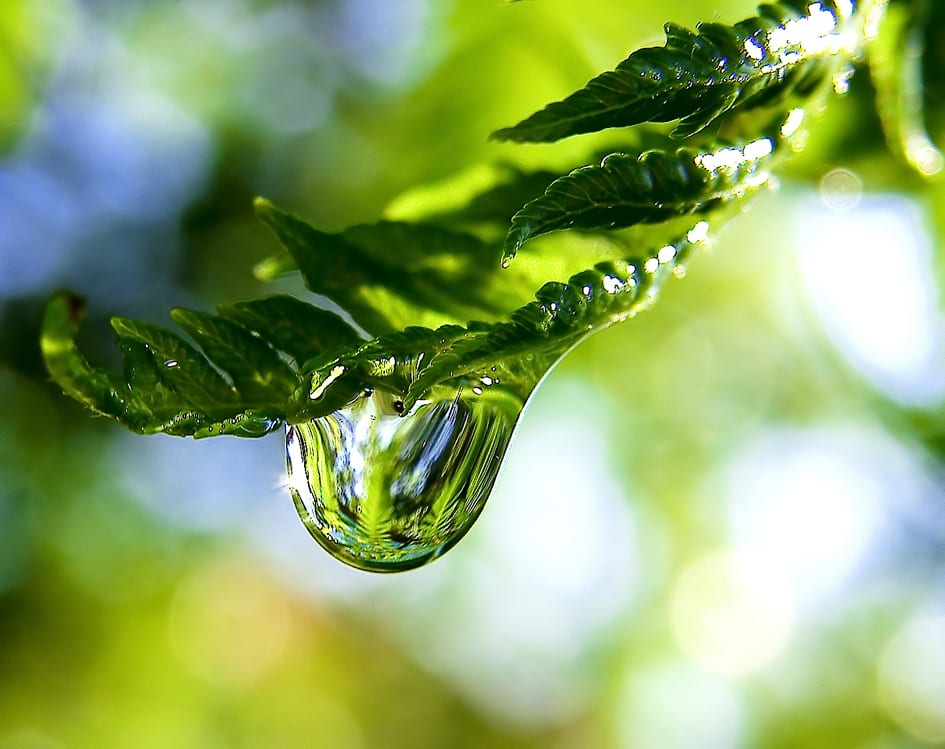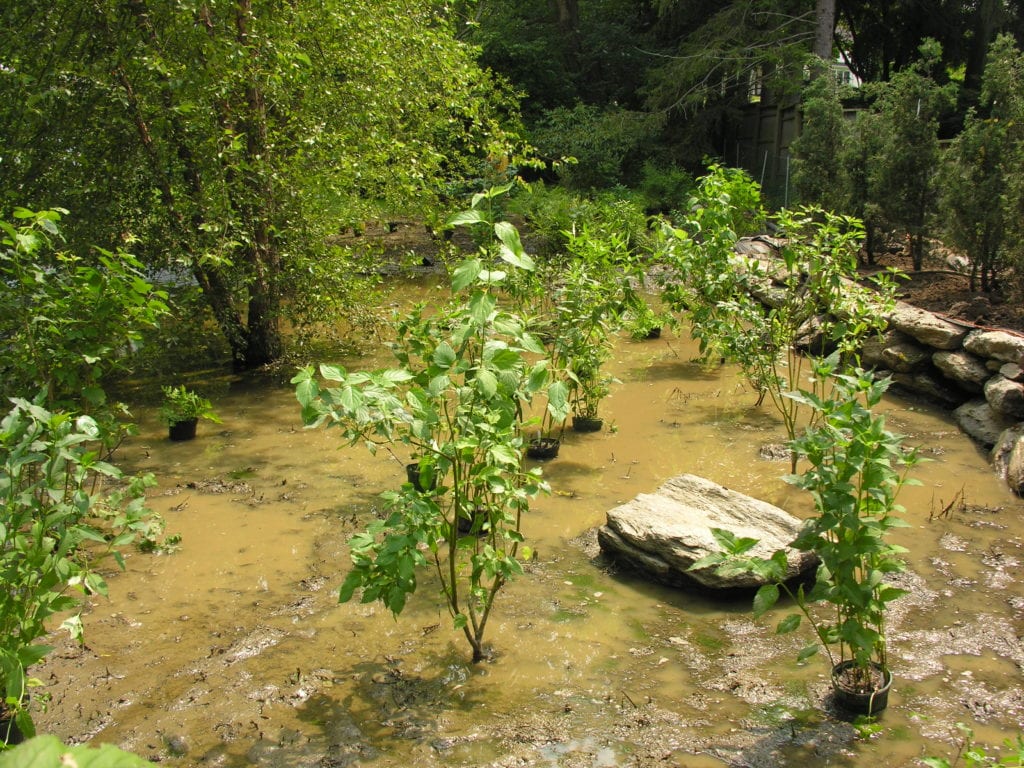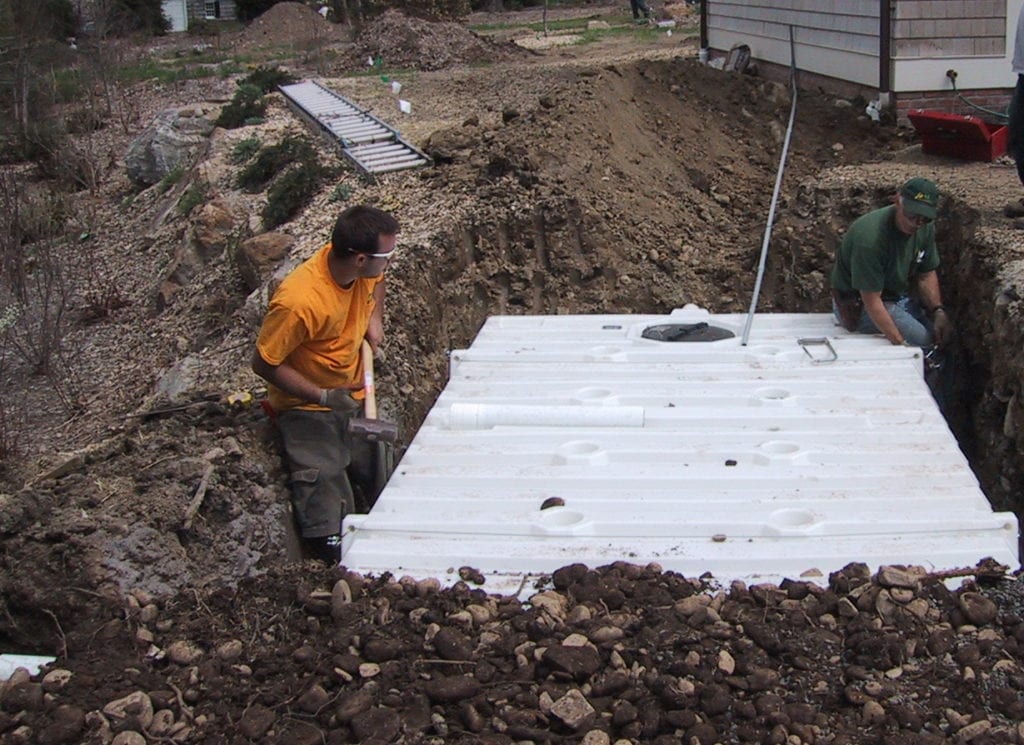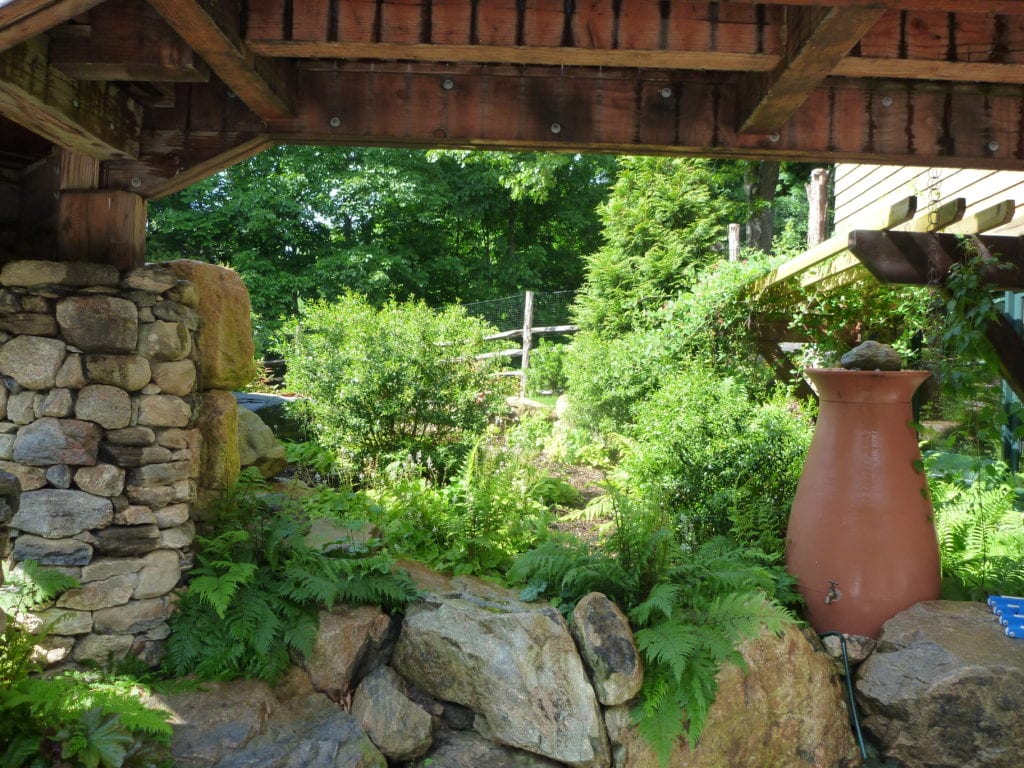by Mike Nadeau
So, water: two molecules of Hydrogen, one molecule of Oxygen. It’s a huge topic. I cannot think of anything that is living or has lived that is or was not dependent on it. Think of that: all life depends upon water. How fragile an arrangement but how elegantly Mother Nature provides. But during times like last summer it seemed she was crying out for some assistance from us large-cranium life forms that didn’t seem to get the memo: please conserve!
We all know water resources are finite, especially potable water, but we often disregard this fact and the laws of physics that are at work here. All the water that has ever been on the earth is being cycled through the earth’s natural systems of rainfall, evaporation, percolation, and so on. It is interesting to stop for a minute and take note that the earth is not making any new water. What we have is what we get. Forever. It does not require a large cranium (in fact, it is proving to be a liability!) to realize that the planet’s need for fresh water is growing exponentially and that we may be on a crash course with unsustainability.
Minimize Water Needs
Landscaping, as it is widely practiced and so near and dear to our hearts and pocketbooks, is a very thirsty endeavor indeed. Turf, just one component of landscaping, is the single most irrigated crop in the country, beating out corn and soybeans! But we all want our landscapes to be healthy and resilient, so in the face of water woes what can we do to use water wisely or, even better, utilize only natural rainfall? Here is where we need to engage our large craniums and turn it from a liability into our asset.
First off, the mundane adage that we have heard repeatedly for years: Right Plant, Right Place. Just this one factor alone can almost eliminate any need for water once a new planting has become established. If we have done our homework correctly, the properly selected and planted (not installed!) plants will thrive where we placed them, with minimal inputs from us, including water – a true no-brainer.
Store Water
Second, consider how to best utilize that natural rainfall. It would be a beautiful thing if it rained in just the right amount and intensity when the plants needed it, but with Global Weirding we are more than ever faced with something more akin to “feast or famine.” Enter rainwater harvesting – the ability to use previous rain events when it’s not raining. A classic way to do this is with cisterns, either above, or below-ground. Above-ground water storage has the advantage of using gravity to feed the water downhill to a thirsty landscape – no pumps, electricity, or nothin’. Below-ground storage has the advantage of keeping the stored water cooler with less evaporation and is “out of sight, out of mind.” Low wattage pumps connected to small solar panels (with batteries for gray days) can push the water up and out to quench your landscape.
A variation on the underground storage method is a gravity fed sub-surface irrigation system that is supplied directly from your gutter’s downspouts. In this scenario rainwater is directed with pipes under your plantings into simple water dispersal beds. Perforated piping wrapped in geotextile fabric is installed under the plantings to allow water to bleed out into a bed of gravel and soil where your plants’ thirst can be slaked. Add a shallow impervious layer of clay or plastic liner with an overflow to prevent creating an anaerobic soil condition and you can extend the benefit of each rainfall by holding some of the water until the soil above begins to dry out. The stored water will then be delivered to the plant roots via capillary action. Valves or switches can be installed to divert excess rainwater to other areas. The latter option requires some large cranium engagement once again, but can be a very effective way to extend the irrigation of some or all of a landscape. And isn’t experimentation and innovation so much more fun than being just another mow, blow, snow and go landscaper?
Target Water
Thirdly, the use of natural wetting agents such as Yucca and good old fashioned organic matter can help to retain more moisture in the root zone. The latter has the uncanny ability of increasing water-holding capacity while improving drainage (be careful not to “fatten” the soil beyond your plants’ requirements with too much OM). Way to go, Mother Nature! Why didn’t we think of that with these oversized craniums of ours?
Back to more conventional approaches, let’s not forget about drip vs. overhead irrigation. We all think we know the virtues of drip, but have you considered the natural weed control achieved by not supplying water in the spaces between the plants? This is especially effective during dry conditions. A drip system requires low pressure, which in turn requires less electricity to power smaller pumps, or again can be powered by small, portable solar panels. Try to power a conventional overhead irrigation system that way! Micro-spray or mist heads are a step in between drip and overhead and are valuable for ground covers and such.
Avoid Water Hogs
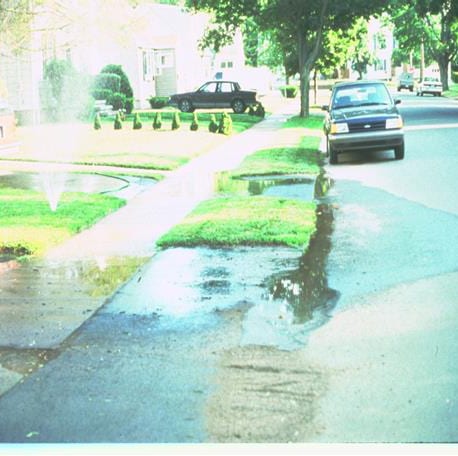
This photo tells an old story. An even better ending is substituting a lawn alternative for water-thirsty grass species.
Let’s face it; sometimes we feel the urge to validate a favorite line in a Grateful Dead song: “Too much of everything is just enough”! When it comes to greening European grass species in summer many of us feel we have no choice. Pure hubris, I say! Switch to low-mow Fescues and save on water, mower time, carbon and noise pollution, all in one step. Better yet, readers that know me know I had to mention getting to know lawn alternatives like meadows and woodlands. Once these habitat magnets are established, you can put away the hoses for good. NO watering required, providing you did the right plant in the right place thing and allowed Mother Nature’s natural process of plants feeding themselves with their own decay. For the meadow that means allowing its own spent vegetation to remain in-situ and for the woodland that means allowing the perfect mulch of one layer of leaves each fall to occur naturally.
Another fact we ecologically-minded land care stewards must face is the grim reality that the weather sure is a-changin’. As I write this we are into a very wet season. But I am not fooled. If last year’s drought is any indication, and it is, these lush green lawns and plantings our clients demand of us (and of Mother Nature) will be a thing of the past in our lifetimes! It is mind-blowing to me that the vast majority of people in this country still flush our bodily wastes with perfectly good potable water and force alien grasses to stay green and avoid their natural dormancy in summer by using vast amounts of precious clean water. For what? Ego-systems instead of ecosystems, that’s what. And to think it is all artifice fashioned by these big brains we carry around on our shoulders. Maybe it is past time to begin really thinking like the beaver who understands and uses water to its advantage without destroying the resource. Or the lowly Fragaria virginica that uses a process called “Guttation” that deposits xylem sap on the edges of its leaves by night, dripping the precious liquid to its roots by day. We can do this, even with our greatest handicap: our large brains.
About the Author
Mike Nadeau co-founded Plantscapes, Inc. in 1981. He has a MS in Plant & Soil Science and has been a Connecticut Licensed Custom Grounds Supervisor and Certified Arborist for over 30 years. In additional to building engineered stormwater and sub-surface biofiltration gardens, Mike works with Connecticut town conservation and inland wetland commissions to improve water quality in wetland habitats, restore native vegetation, and to develop long-term conventional and organic land care programs. He is a founding member of the NOFA Organic Land Care Program and helped draft their Standards for Organic Land Care and Organic Lawn and Turf Course Manual.

